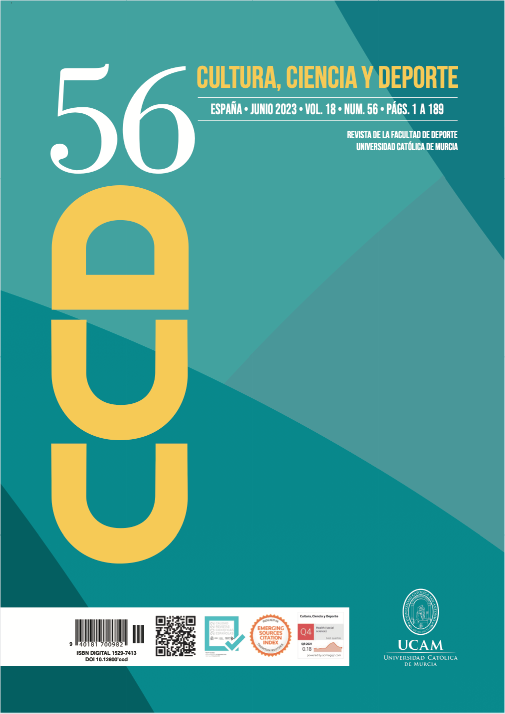How are goals born? External and internal factors in European soccer
DOI:
https://doi.org/10.12800/ccd.v18i56.1926Resumen
This research studied by means of linear regression models which factors that most influence the achievement
of points and goals in eight European leagues in the 2019-2020 season. In order to analyse the points
obtained, external variables such as budget, stadium attendance, squad experience, fair play, or whether the
players are foreign, national, home-grown or belong to an international team, were taken into account. For the
goals, internal or match-specific variables such as shots, scoring chances, corner kicks, number of cards, faults,
ball possession, dribbles, tackles, presence or absence of crowd and the pitch factor, were used. The results revealed
the importance of budget and fair play, as well as scoring chances and shots. The presence of the public and the
pitch factor had hardly any influence. The external factors show regression models with an adjusted R2 between
0.508 and 0.916, while in the case of internal factors range between 0.289 and 0.464. The data may be of relevance
for improving transfer investment strategies, as well as for increasing the performance of training sessions, tactics and
line-ups.
Descargas
Publicado
Cómo citar
Número
Sección
Licencia
Derechos de autor 2023 Creative Commons Attribution License

Esta obra está bajo una licencia internacional Creative Commons Atribución-NoComercial-CompartirIgual 4.0.
Los autores que publican en esta revista están de acuerdo con los siguientes términos:- Los autores conservan los derechos de autor y garantizan a la revista el derecho de ser la primera publicación del trabajo al igual que licenciado bajo una Creative Commons Attribution License que permite a otros compartir el trabajo con un reconocimiento de la autoría del trabajo y la publicación inicial en esta revista.













